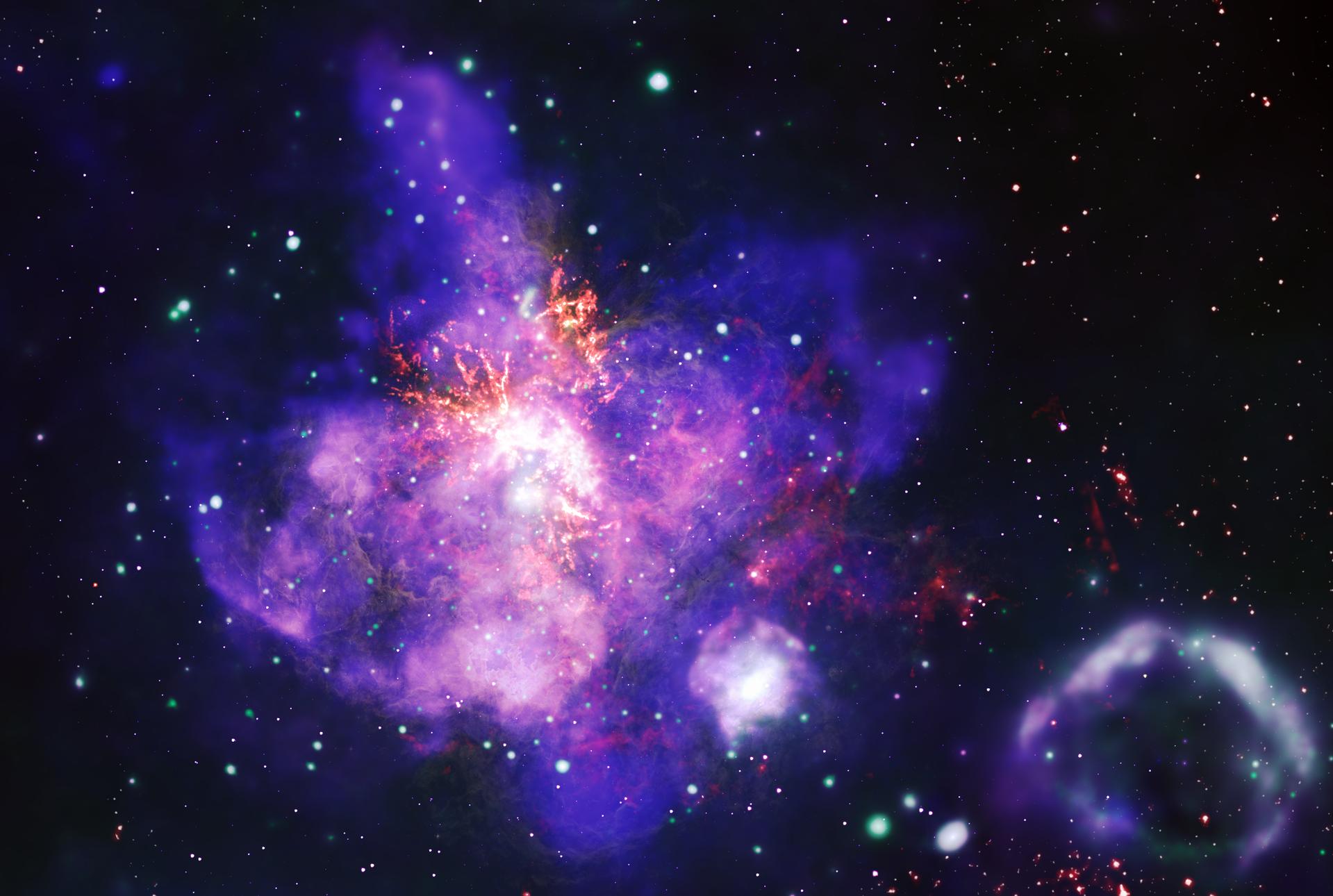Ways4eu WordPress.com Blog
SPA View of ways4eu.wordpress.com
30 Doradus: Where Stars Are Born and Vacation Plans Go Awry!
By JohnTheWordWhirlwind
on Fri Feb 14 2025
If you ever wondered what happens when you throw X-rays, optical data, and some pesky radio signals into a blender, you’re about to find out—because 30 Doradus is the smoothie we didn’t know we needed!
Picture this: A deep space region glowing like a cosmic disco ball, where new stars are born with the same enthusiasm teenagers have at a summer music festival. This isn’t just any star-forming zone; it’s THE star-forming zone. Thanks to NASA’s Chandra X-ray Observatory (the blue and green lights making this space rave possible), we have the deepest X-ray image ever captured. It’s so deep, it could be the long-lost cousin of that existential crisis you had in college.
But what’s a party without some optical bling? Enter the Hubble Space Telescope, strutting in with its yellow tones like a starlet at the Academy Awards. Seriously, Hubble must have had its makeup done by the finest stars in the universe because those yellows are popping. It’s the kind of look that would make even the brightest supernova turn a little green with envy!
And let’s not forget about the adventurous crew—the Atacama Large Millimeter/submillimeter Array. These radio signals—looking like a mix of metallic oranges—are basically the gossip queens of the cosmos, whispering the juiciest details about the gas and dust swirling around our new star buddies. “Did you hear what happened to that protostar? I heard it’s dating a black hole!” Honestly, the drama never ends in the universe.
Together, this trio of cosmic imagery has created a stellar arrangement that comes alive in ways we can only dream of. It’s as if someone threw a cosmic Thanksgiving dinner, and all the stars showed up with their best dishes, leaving us mere mortals staring wide-eyed at the menu of the universe.
So, if you ever feel insignificant while gazing at the vast night sky, remember this: in the grand scheme of things, you are just one tiny speck on an ordinary planet, while dazzling parties like 30 Doradus are happening countless light-years away. So, go ahead and schedule your space vacation to 30 Doradus! Just be sure to check for wormholes before booking that flight. We wouldn’t want you to end up in the wrong nebula, now would we?
In conclusion, while our mundane Earthly dilemmas—like what to have for dinner—may seem gigantic, up there in 30 Doradus, they’re truly just twinkling stars in the vastness of the galaxy. And who knows, maybe one day you too will be part of the story of a star being born… or maybe just a very anxious space tourist trying to find the restroom among the constellations. Either way, it’s sure to be a blast!
Image via NASA https://ift.tt/sfCAhLR
